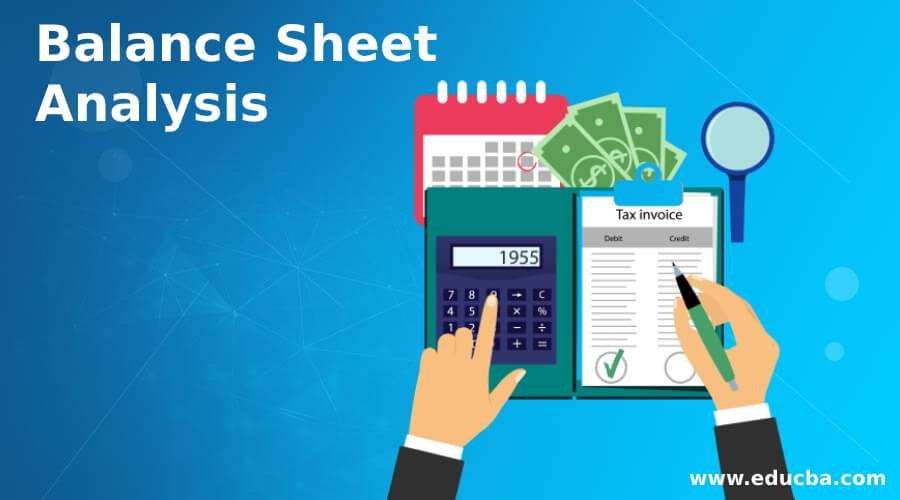Updated July 17, 2023
Definition of Balance Sheet Analysis
Balance sheet analysis is the process of checking the balances of liabilities, assets and shareholder equity. It is advised that companies should perform the analysis quarterly in order to help stakeholders with the true picture of the company.
Balance sheet analysis is often done by research analyst in order to find the potential of the company and whether the share price is undervalued or overvalued. This analysis help in making the buy/sell decision of the company’s share. Thorough analysis of balance sheet involves understanding of the balance sheet items minutely.
Objectives of Balance Sheet analysis
- Balance sheet analysis help us to understand the financial position of a company. All the asset, liability and equity position of a company can be found in detail by reading a balance sheet. So the financial position of a company standing on a particular date can be analysed from balance sheet.
- It helps us to understand the components of shareholders equity. If the shares were issued at premium, then the reserve will portray the capability of the company to procure positive NPV projects without issuing debts. So its objective is to throw light on the equity of the company
- All the liabilities can be analysed from balance sheet. It helps a person to understand the long term and short term commitment of a firm.
How to Perform Balance Sheet Analysis?
How to perform balance sheet analysis are explain below with step:
Step #1 – Tallying the Balance Sheet
The total asset balance should match with (liability + equity) balance. this process helps an analyst to understand the capability of a company. When asset is more than liability, then the extra goes to equity. so equity position is the net worth of the company. When a company tries to take-over another company, then the acquirer pays for the equity of the target. getting correct equity balance is extremely important.
Step #2 – Analysing the liabilities
Solvency of a company depends on its obligations. If the company is burdened with long term high interest bonds, then the chances of bankruptcy is high. As the interest burden is high, so the cost of raising new capital will also be more. So all these analysis must be done in order to gauge the solvency of a company
Step #3 – Ratio Analysis
Pure ratios are calculated from balance sheet items. The ratio helps in comparison of the firm with its peers. There are several ratios that can be calculated from balance sheet items. Once the ratios are calculated, it is compared with peer firms to see the position of the firm in the market. Debt ratio is an important indicator to judge the debt position of a company. If a company has targeted capital structure, then the company needs to find the weightage of debt at regular intervals, in order to keep the targeted structure in line.
Other important ratio that can be computed from balance sheet is inventory turnover ratio. This ratio helps you to calculate the days of inventory. Days of inventory helps an analyst to estimate the number of days a firm holds its inventory. So orders should be placed accordingly.
Step #4 – Intangible Asset analysis
Firms have intangible assets like rights, patents which increases the earning potential for a long term. Most of the intangible assets has maturity. So thorough analysis regarding the future profit generation capability of the intangible assets should be done. A good patent can be extremely profitable. It gives right to the company to earn from patent rights for years. So the future prospect is extremely high when company has a good patent
Step #5 – Analysing Subsidiaries and Goodwill
Goodwill and subsidiary information can be found in balance sheet. This helps analyst to segregate the direct and indirect income sources. At times the overall company is profitable, but a particular subsidiary is incurring loss. After thorough analysis, the management can take decision regarding the loss making subsidiary.
If the goodwill in asset side is too high for a company, then it means that the company has spent too much while acquiring a target. It is generally seen, that paying too much premium is not a good strategy.
Conclusion
Balance Sheet analysis is the basic part of any equity researcher, investor, management, financial modeller etc. Balance sheet is the gateway to the financials of a company. So everything that a person wants to know about a company is there in the balance sheet. One should know the proper way to analyse a balance sheet in order to extract all the relevant information.
Recommended Articles
This is a guide to Balance Sheet Analysis. Here we also discuss the definition and how to perform balance sheet analysis along with the objective. You may also have a look at the following articles to learn more –


